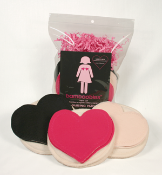How To Continue Breastfeeding After Returning To Work
 Coming back to work from your maternity leave is a huge adjustment. While you will not be able to physically nurse your baby as often as you used to, providing her with expressed breast milk is well worth it. If you plan to breastfeed your baby after returning to work, there are many things to think about. When you make your initial plan, it is important to coordinate with your partner, employer and your infant’s caregiver.
Coming back to work from your maternity leave is a huge adjustment. While you will not be able to physically nurse your baby as often as you used to, providing her with expressed breast milk is well worth it. If you plan to breastfeed your baby after returning to work, there are many things to think about. When you make your initial plan, it is important to coordinate with your partner, employer and your infant’s caregiver.
Get the right gear – Working moms have to be efficient and it may be difficult if it takes you a half an hour to empty each breast. Consider investing in a dual hospital grade pump that empties both breasts at the same time (Laing, 2009). Make sure you have plenty of milk storage bags, a lunch bag and several ice packs. You will need several baby bottles with slow flow nipples that mimic mom’s breast. This way, your baby is less likely to develop nipple confusion (Ask Dr. Sears, 2011). Purchase extra nursing bras and nursing tops to make pumping more quick and efficient. Determine how often will you nurse your infant yourself – You will have to get ready for work every morning, so you may need to put her on a nursing schedule to streamline your morning routine. Figure out whether you can make it home (or to the daycare) during the lunch hour to nurse you baby and to take time to bond with her. Ask your partner or caregiver to feed your baby in a way that allows you to nurse him when you get home from work. Figure out where you will pump and how often – Ask your employer for a private room that you can use and talk about taking extra breaks to pump. Explain to your supervisor why it is important and communicate to him how you plan on meeting the demands of your job. To keep your milk supply high and to prevent engorgement, you will have to express your breast milk approximately as often as your baby nurses or at least twice during your work day (Ask Dr. Sears, 2011). Find out how you will store your breast milk – It is best to store breast milk in the refrigerator in your break room. You can put the storage bag in a separate container to conceal it. If a refrigerator is not available, you can store the milk in an insulated lunch bag with a few ice packs. Remember that you can only store the milk in a cooler for a few hours, so try to get it home as soon as possible and refrigerate or freeze it (Ask Dr. Sears, 2011). Make sure your partner and caregiver understand how to handle breast milk -Make sure they understand how to thaw, store and transport breast milk, as well as when they should discard it. Explain to them that they cannot microwave breast milk, and that bottles must be washed after each use. Nurse your baby as often as you can when you are home. It will provide him with vital nutrients directly from the source, give you time to bond and stimulate milk production. 
References
Ask Dr. Sears. (2011). 20 Tips for Working and Breastfeeding. Retrieved July 11, 2012, from Ask Dr. Sears: http://www.askdrsears.com/topics/breastfeeding/while-working/20-tips-working-and-breastfeeding Ask Dr. Sears. (2011). How To Fit Pumping Onto Your Work Schedule. Retrieved July 11, 2012, from Ask Dr. Sears: http://www.askdrsears.com/topics/breastfeeding/while-working/how-fit-pumping-your-work-schedule Ask Dr. Sears. (2011). Storing and Transporting Breast Milk. Retrieved July 9, 2012, from Ask Dr. Sears: http://www.askdrsears.com/topics/breastfeeding/while-working/storing-transporting-breast-milk Laing, L. (2009, February). Balancing Work & Breastfeeding. Retrieved July 10, 2012, from Parents Magazine: http://www.parents.com/baby/breastfeeding/breast-pumping/balancing-work–breastfeeding/?page=4




